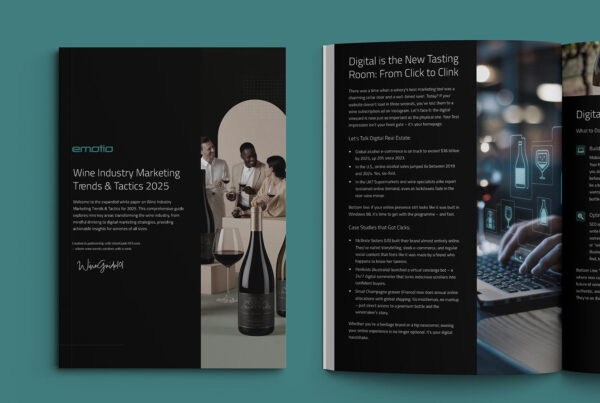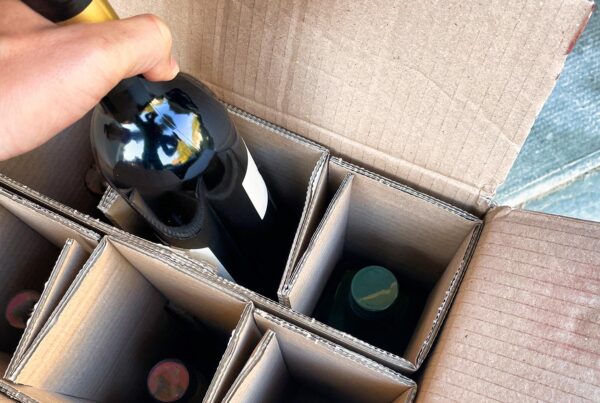Social media has transformed how businesses interact with their audiences, and the wine industry is no exception. In the UK, home to a thriving wine scene with over 1,000 vineyards, platforms like Instagram offer wineries an opportunity to engage directly with consumers, build brand awareness, and drive sales. With the growing popularity of sparkling wines and the increasing importance of sustainability, social media can help wine businesses highlight their unique offerings and tell compelling stories.
This article, provided by my agency emotio.co.uk, explores how UK wine businesses can effectively use social media to grow their presence and succeed in a competitive market. We also share best practices, engaging content ideas, and examples of how wineries leverage social platforms to thrive.
Why Social Media Matters for the UK Wine Industry
Social media is a natural fit for the wine industry due to its visual and storytelling appeal. The rise of English sparkling wine and the growing consumer preference for sustainable practices make these platforms even more relevant in the UK. Platforms like Instagram allow wineries to showcase vineyard beauty, winemaking processes, and lifestyle experiences associated with wine.
The success of campaigns like #theBIGenglishwinegoodfriday highlights social media’s potential. This campaign generated 13 million impressions and boosted sales for participating wineries. By using targeted campaigns and engaging storytelling, wineries can connect with their audience on a deeper level, encouraging loyalty and purchases.
Best Practices for Social Media Marketing
To achieve maximum impact, wineries must implement strategic social media practices. Here are key considerations:
1. Comply with UK Advertising Regulations
Ensure all content adheres to the UK Code of Non-Broadcast Advertising, Sales Promotion, and Direct Marketing (CAP Code). This includes responsibly promoting alcohol, using age-gating tools, and avoiding content that appeals to underage audiences.
2. Track Performance
Analytics tools like Instagram Insights provide valuable data on follower demographics, engagement, and conversions. Use this information to refine your strategy and focus on what resonates most with your audience.
3. Leverage Paid Advertising
Paid social media campaigns can amplify your reach and target specific demographics. For example, Instagram Ads can be used to promote new releases, wine tastings, or vineyard tours to users interested in wine and travel.
4. Consistency is Key
Posting regularly ensures your brand remains top-of-mind. Create a content calendar to plan posts in advance, maintaining a consistent voice and aesthetic.
5. Develop a Social Media Strategy
Define goals, identify your target audience, and tailor content accordingly. Set specific, measurable, and time-bound objectives to track progress.
6. Tell Your Brand Story
Share your winery’s history, values, and winemaking philosophy. Authentic storytelling fosters a stronger connection with consumers.
7. Promote Sustainability
Highlight eco-friendly practices such as organic farming, water conservation, and renewable energy use. This aligns with consumer demand for ethical and sustainable brands.
8. Avoid Over-Promotion
Focus on relationship-building rather than constant sales pitches. Engaging and educational content strengthens trust and loyalty.
Content Ideas for Wineries
Creating high-quality, engaging content is essential for connecting with your audience. Here are thematic ideas:
Visual Storytelling
- Behind-the-Scenes: Share photos and videos of the vineyard, harvests, and winemaking processes.
- Seasonal Updates: Post about vineyard activities throughout the year, from bud break to harvest.
- Staff Profiles: Introduce the team behind your winery to humanise your brand.
Educational Content
- Wine and Food Pairings: Post pairing ideas with enticing visuals and tasting notes.
- Wine Tastings: Host live or recorded sessions to educate followers about your wines and tasting techniques.
- Simplified Wine Jargon: Use accessible language to explain wine terms and tasting experiences.
Interactive Engagement
- New Releases: Announce new wines with captivating visuals and tasting notes.
- National Days: Join conversations around wine-related days like National Rosé Day using relevant hashtags.
- User-Generated Content: Encourage customers to share photos of your wines and feature their posts on your page.
- Contests and Giveaways: Reward engagement with contests and exclusive offers.
Building a Community on Instagram
Social media isn’t just about posting content; it’s about fostering connections. Wineries can use Instagram to build a loyal community by:
- Using Relevant Hashtags: Incorporate a mix of popular and niche hashtags to expand your reach.
- Engaging Actively: Respond to comments and messages promptly to show your followers that their feedback matters.
- Collaborating: Partner with local businesses, influencers, or other wineries for cross-promotion.
- Hosting Q&A Sessions: Interact directly with followers through live sessions featuring your winemaker or sommelier.
The Role of Influencers
Influencer marketing is a powerful tool for reaching new audiences. Collaborating with influencers who align with your brand can enhance credibility and visibility.
Tips for Effective Influencer Partnerships:
- Choose the Right Influencers: Partner with individuals whose values match your brand. Micro-influencers often have more engaged followers.
- Provide Samples: Send wines for influencers to review and share with their audience.
- Invite Participation: Host events or vineyard visits for influencers to create authentic content.
- Track Results: Monitor engagement, reach, and website traffic generated by influencer campaigns.
Challenges and Opportunities
Challenges
- Regulations: Navigating complex advertising guidelines for alcohol promotion.
- Algorithm Changes: Staying visible amidst evolving social media algorithms.
- Resource Intensity: Creating and managing quality content requires time and effort.
Opportunities
- Rising English Wines: Showcase the quality of English sparkling wines to challenge perceptions and gain traction.
- Sustainability: Use social media to promote eco-conscious initiatives and appeal to ethical consumers.
- Wine Tourism: Attract visitors by sharing vineyard experiences and tasting room events.
Case Study: #theBIGenglishwinegoodfriday
This campaign demonstrates how social media can drive sales and engagement. Its success was due to:
- A clear objective to promote English wine.
- A collaborative approach involving wineries, retailers, and influencers.
- Engaging visuals and calls to action that encouraged participation.
Wineries can replicate this success by adopting similar strategies and leveraging relevant hashtags.
How Emotio Design Group Can Help
Building a robust social media presence requires branding, marketing, and digital engagement expertise. Emotio Design Group specialises in helping wine businesses achieve success in these areas.
Our Services:
- Brand Development: Craft a unique identity that resonates with your audience.
- Social Media Strategies: Create tailored campaigns to increase visibility and engagement.
- Digital Solutions: Optimise e-commerce platforms and integrate analytics to track performance.
- Content Creation: Develop high-quality visuals and storytelling to elevate your brand.
With decades of experience, Emotio is uniquely positioned to help wine brands connect with consumers and grow their presence in the UK market.
Conclusion
Social media is a game-changer for the UK wine industry, offering wineries an opportunity to connect with consumers, tell their stories, and build lasting relationships. By focusing on engaging content, authentic storytelling, and strategic collaborations, wine businesses can harness the power of social media to grow and thrive.
For those looking to take their social media strategy to the next level, Emotio Design Group is here to support your journey. Contact us today to learn more about how we can help you succeed in the competitive UK wine market.




